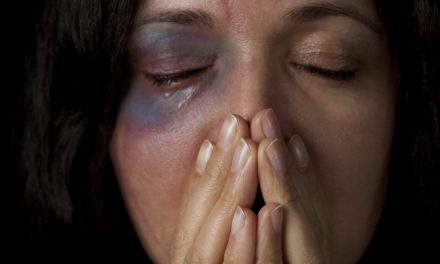Described as a headache disorder, migraines surpass the discomfort of a typical headache, as they are accompanied by a host of neurological symptoms that are often debilitating and long-lasting. The World Health Organization (WHO) describes headache disorders as “among the most common nervous system disorders.” Within that category, chronic migraine is a type of disorder that causes throbbing pain, pressure, sensitivity to light, smell, and sound, nausea, and vomiting. Some people who get migraines also experience a visual aura in which they see flashing lights or zig zag lines. According to the U.S. National Library of Medicine, more than 12% of Americans suffer from chronic migraines. The National Institutes of Health (NIH) reports that, annually, 1 out of 7 migraine sufferers end up in the ER due to pain and other symptoms.
According to the Migraine Research Foundation, chronic migraines are the sixth most debilitating disease in the world. Despite the commonality of the disorder, migraine research is severely underfunded and not much is understood about the condition. However, scientists in Milan, Italy at the University Vita-Salute’s San Raffaele Scientific Institute found that the brains of migraine sufferers are structurally different from those who don’t suffer from migraine headaches. It has also been reported that migraines may permanently alter the brain by increasing the risk of brain lesions (damaged tissue inside the brain), and lead to changes in white and grey matter and the brain’s volume. Additionally, research suggests chronic migraines are linked to cardiovascular disease. While their cause is unclear, migraines are more common in people with anxiety and depression, and are more prevalent in women than in men. Children also suffer migraines, with many experiencing a migraine attack before the age of 12.
Migraine triggers are numerous and they vary. Triggers include allergies, light, sound, smells, hormone fluctuations, several foods, and alcohol. Furthermore, genetics play a role in whether or not a person experiences migraines. A person with one parent who suffers chronic migraines has a 50% chance of inheriting the condition. Migraines can happen suddenly or after exposure to known triggers, and they last anywhere from a few hours to a few days. Additionally, certain weather patterns, such as low air pressure, and sudden weather changes may trigger an attack.
Migraine attacks tend to happen over a series of stages. The prodrome stage, also known as the pre-headache or warning stage, marks the beginning of a migraine and can last from hours to days. Symptoms of the prodrome stage vary by person, but are numerous and include:
- Mood swings
- Depression and irritability
- Difficulty focusing
- Sensitivity to light and smell
- Fatigue
- Insomnia
- Nausea
- Constipation or diarrhea
- Muscle stiffness
- Food cravings
- Frequent urination
- Yawning
Next, an individual might experience the migraine aura. Along with the aforementioned flashing lights and zig zags, auras cause vision blurriness, vision loss, or blind spots in one or both eyes. The aura phase usually lasts for up to an hour, and it can occur during the migraine headache itself. After the headache, some people experience the postdrome or hangover stage. Symptoms of the postdrome stage are almost identical to the prodrome stage, with the difference being that it happens at the end of the migraine attack. Not everyone who gets migraines experiences all four stages, and the experience of migraine attacks may vary from time to time within the same person.
While there is no cure for migraines, they are managed and treated in a number of ways. Medications that treat migraines include acetaminophen, ibuprofen, naproxen, and varying tryptamine-based medications. In addition to medication, several non-pharmaceutical remedies exist to help individuals manage their migraine pain. At home remedies include a warm (or cold) compress, yoga, staying hydrated, meditation, pressure point massages, or lying in a dark room. Migraine sufferers may also seek out acupuncture or Botox as a long-term treatment. Botox injections are an FDA approved treatment for chronic migraines, as the drug works by reducing muscle contractions where injected. Finally, doctors can prescribe their patients magnesium and riboflavin supplements as a preventative measure.
Though migraines can be treated at home, medical intervention is necessary under certain circumstances. For example, the symptoms of a stroke can be confused for a migraine attack. Along with severe headache, if an individual experiences a loss of balance or movement, vision, or speech impairments they’ve never had before, they should seek emergency medical attention right away. Additionally, if experiencing a stiff neck or fever with a migraine, or if it comes on suddenly like a thunderclap, these could be signs of a stroke. Aside from stroke, common chronic migraine comorbidities include heart disease, hypertension, patent foramen ovale (hole in the upper chambers of the heart), restless leg syndrome, epilepsy, and asthma.
Migraine headaches are an exhausting experience, and many sufferers are left incapacitated as the pain runs its course. It’s not uncommon to miss out on events, cancel plans, or take the day off from work or school due to a migraine attack. Despite this, the American Migraine Foundation (AMF) estimates that less than 50% of people who experience chronic migraines seek out medical attention. As a result, the AMF created a locator for individuals to find headache specialists near them.
Though challenging, migraines can be overcome. Whether through dietary or lifestyle changes, relaxation techniques, the right medications – or a combination of all of the above – there is relief for individuals who endure migraines. Little is understood about migraines and what causes them, or if there will ever be a cure, but it’s important for people to know that they have options outside of being plagued by chronic pain and bodily discomfort.








